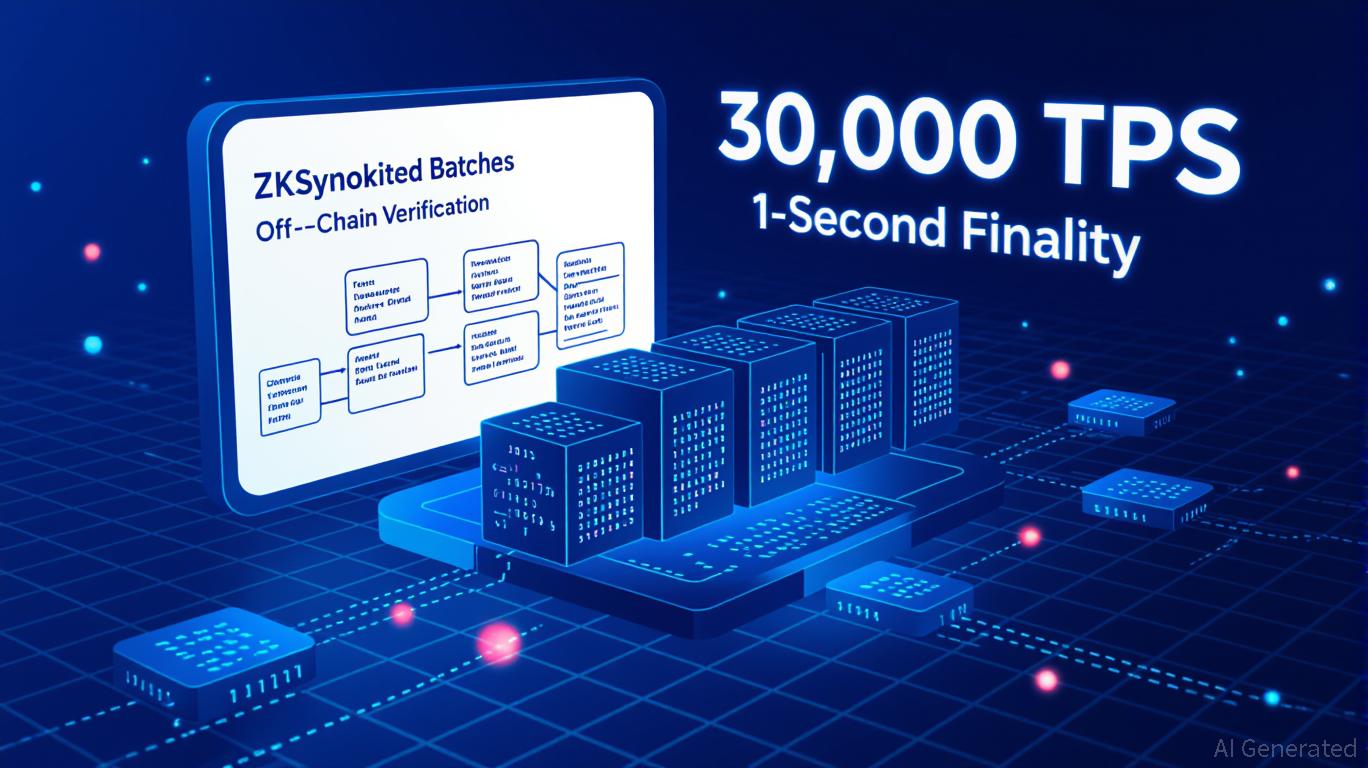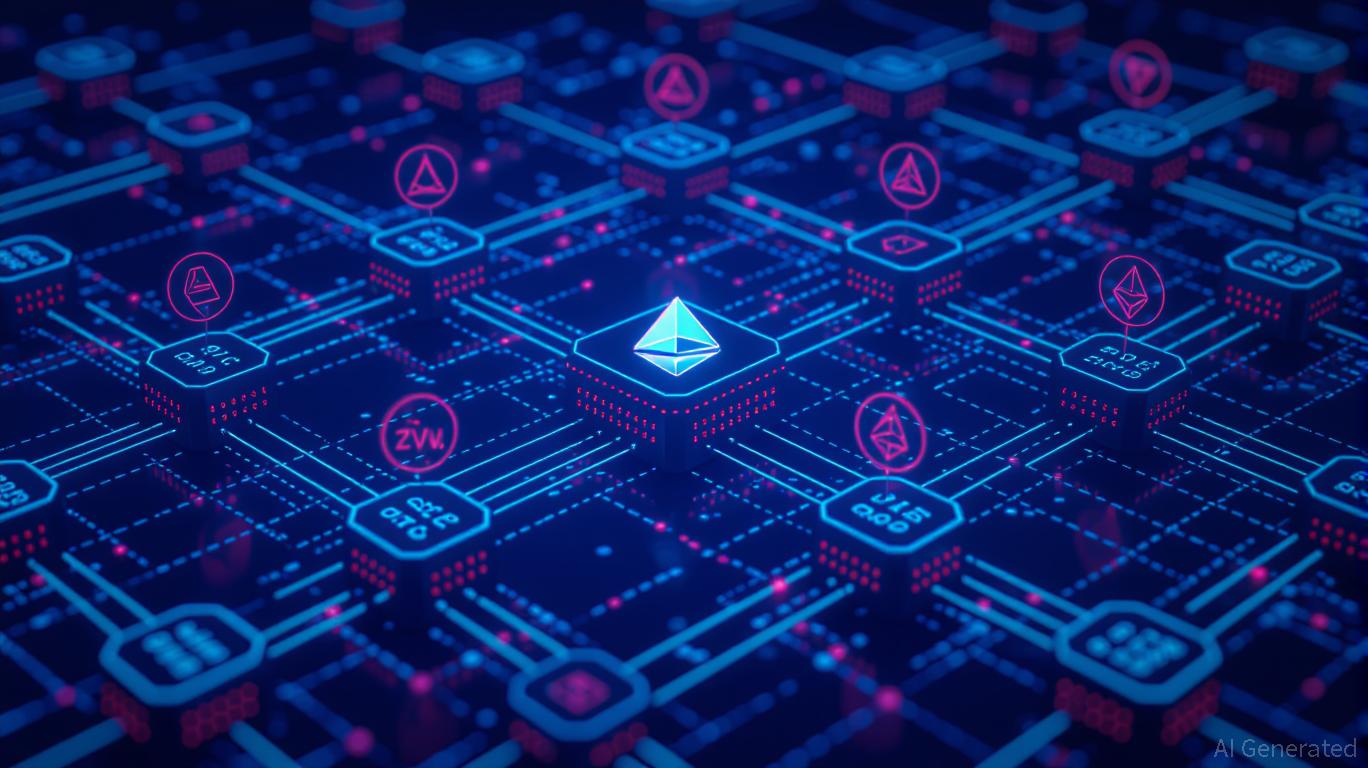LUNA +2.72% Experiences Short-Term Fluctuations and Ongoing Downtrend
- LUNA rose 2.72% in 24 hours to $0.0833 on Nov 7, 2025, but fell 79.94% annually amid prolonged bearish trends. - Short-term gains reflect speculative trading, not protocol upgrades, with no LUNA-specific catalysts reported recently. - Technical indicators (RSI, MACD) confirm bearish momentum, as 50/200-day moving averages signal resistance below current price. - Analysts warn LUNA remains in correction phase without clear recovery path unless on-chain adoption or institutional demand increases.
LUNA, the primary asset of the
This recent short-lived surge has occurred alongside broader fluctuations in the cryptocurrency market, yet there have been no fresh updates specifically related to LUNA in recent news. The Terra blockchain, which is powered by LUNA, continues to function as intended, with the UST stablecoin holding its value against the U.S. dollar. Nevertheless, the long-term outlook for LUNA remains negative, causing unease among both investors and developers. The token’s latest swings seem to be fueled more by speculative trading than by any fundamental protocol changes.
Technical analysis for LUNA continues to indicate a bearish outlook, as both the RSI and MACD suggest a lack of upward
Backtest Hypothesis
The lack of recent developments on-chain or at the protocol level for LUNA prompts the question of whether technical or algorithmic trading strategies could effectively capture short-term price shifts. Considering LUNA’s historical price trends, a backtesting approach could be used to test the effectiveness of strategies based on moving averages or volatility breakouts. For example, a method that takes long positions when the 50-day moving average moves above the 200-day average—a pattern known as a “golden cross”—and exits when the reverse occurs (a “death cross”) could be evaluated using past data to determine its potential profitability.
Yet, with LUNA’s current price direction, such a strategy would likely have limited success in the short run. The token has already breached these crucial levels and shows no indication of a trend reversal. A more practical method may involve using volatility-based signals—like Bollinger Bands or Average True Range—to spot possible trades in a market that is moving sideways.
Disclaimer: The content of this article solely reflects the author's opinion and does not represent the platform in any capacity. This article is not intended to serve as a reference for making investment decisions.
You may also like
Vitalik Buterin's Progress in Zero-Knowledge Technology and the Investment Opportunities within Ethereum's Layer-2 Ecosystem
- Vitalik Buterin prioritizes ZK technologies to optimize Ethereum's post-Merge scalability, targeting modexp precompile replacement for 50% faster ZK-proof generation. - ZKsync's Atlas upgrade enables 15,000+ TPS and near-zero fees by redefining L1-L2 liquidity, positioning ZK-based L2s as Ethereum's infrastructure backbone. - Dencun's "blob" data slashes L2 costs by 98%, driving Base and Arbitrum to surpass Ethereum's base layer in transaction volume and user adoption. - ZK L2s like ZKsync and StarkNet s

Vitalik Buterin Supports ZKsync: What This Means for Layer 2 Scaling
- Vitalik Buterin endorses ZKsync, highlighting its ZK-rollup tech as critical for Ethereum's scalability and decentralization goals. - ZKsync's Atlas upgrade achieves 30,000 TPS with 1-second finality, enhancing programmability while maintaining on-chain security. - The project faces competition from Arbitrum and Optimism but differentiates through privacy, low fees, and Ethereum compatibility. - Rigorous audits and emergency response protocols strengthen ZKsync's security, though real-world performance r

ZK Atlas Enhancement: Driving Blockchain Expansion and Business Integration in 2025
- ZKsync's 2025 Atlas Upgrade introduces a high-performance ZK stack with 15,000+ TPS, redefining blockchain scalability through modular Layer 2/3 infrastructure. - The upgrade enables bridge-free Ethereum interoperability and supports EVM/RISC-V/WASM compatibility, addressing enterprise needs for hybrid blockchain solutions. - Institutional adoption surges with ZK token's 50% price jump and $19M+ partnerships, though legacy system integration and regulatory clarity remain key challenges. - BaaS compatibil

ZK-Related Cryptocurrencies: Reasons Behind the ZK Surge in November 2025
- ZK crypto sector dominates 2025 market via on-chain adoption and institutional validation, driven by privacy-compliant infrastructure and real-world use cases. - Zcash (ZEC) surges 400% as shielded pool hits 20% supply, while Immutable (IMX) builds $920M gaming ecosystem using ZK-powered zkEVM technology. - Worldcoin (WLD) advances biometric verification without data exposure, and Succinct's OPL scales ZK infrastructure for enterprise adoption. - Institutional capital prioritizes ZK projects with measura
